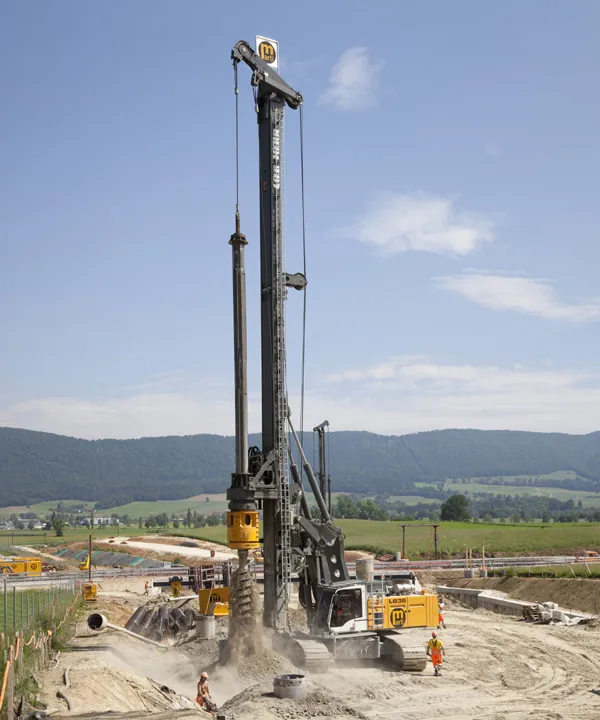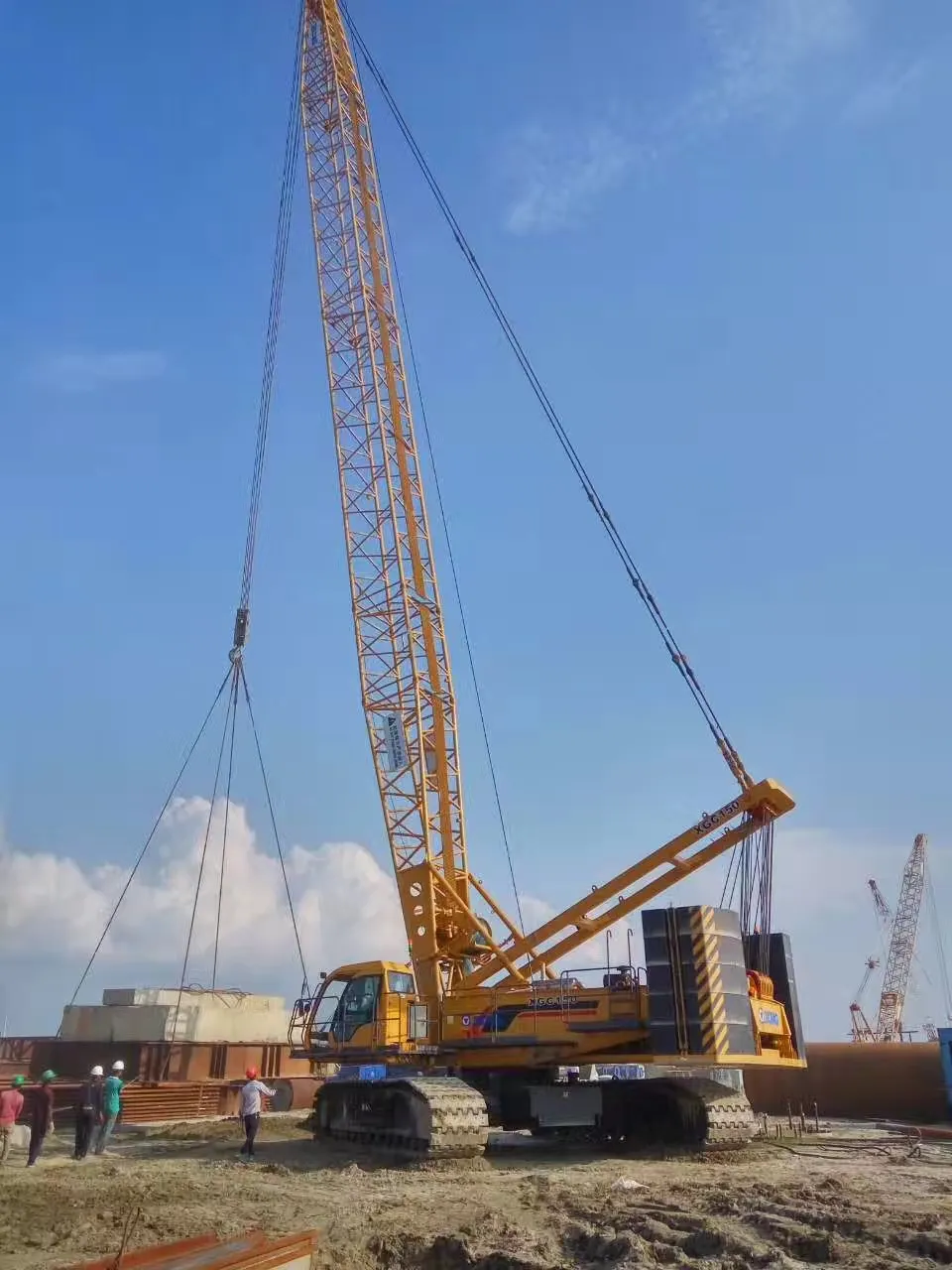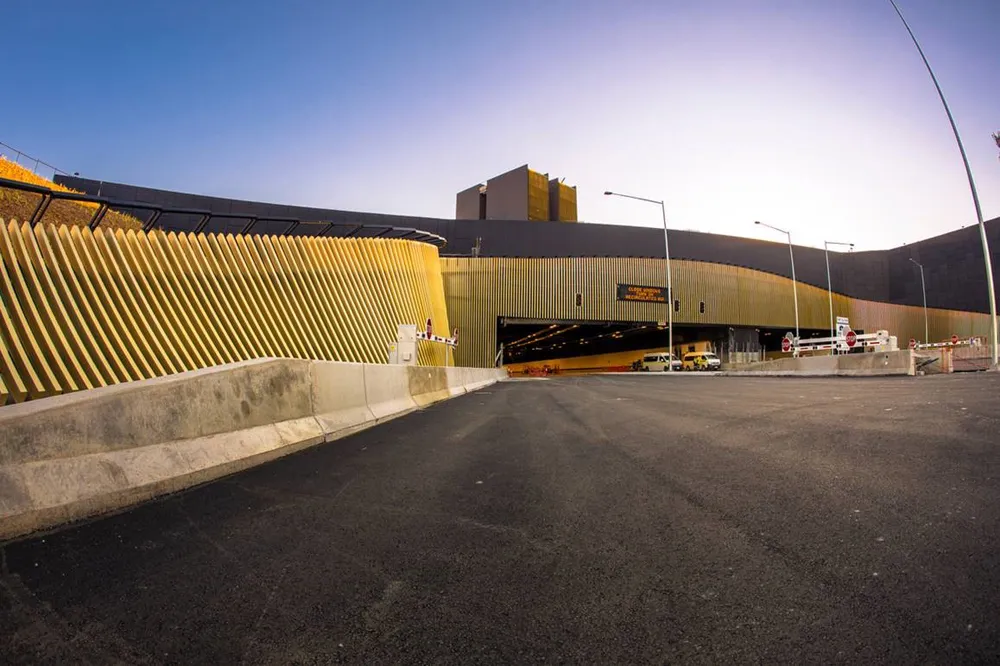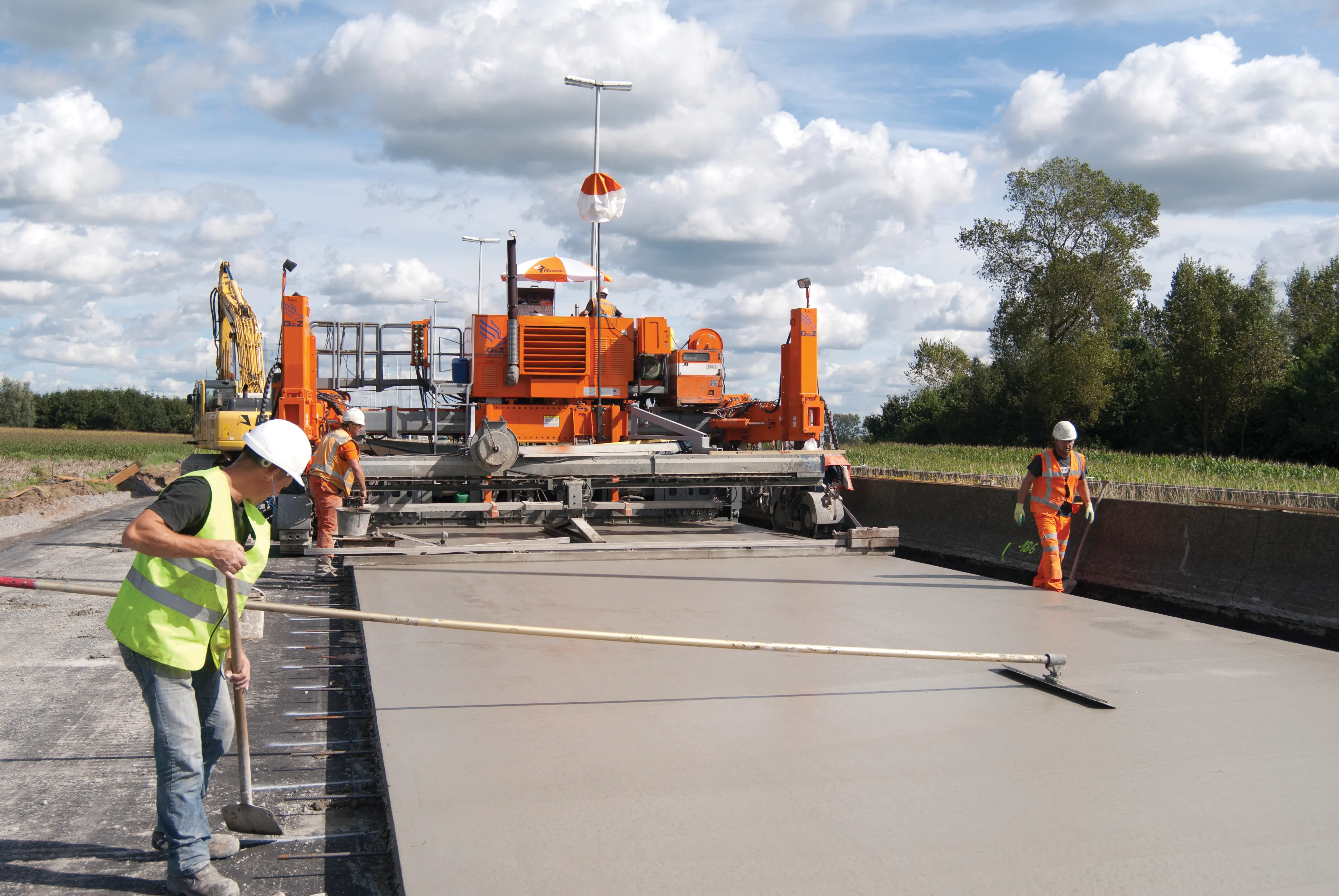Contractor Marti Tunnelbau has carried out work on the A16 road construction project in the Swiss canton of Jura with help from its Liebherr LB28 and LB36 piling rigs.
February 13, 2012
Read time: 2 mins

Contractor Marti Tunnelbau has carried out work on the A16 road construction project in the Swiss canton of Jura with help from its Liebherr LB28 and LB36 piling rigs.
The two718 Liebherr drilling rigs were used to install a secant pile wall for slope and foundation pit reinforcement.
The 3.3km Tunnel de Choindez is being built between the border of Jura and Delémont to the east, and the link is due to open in 2016.
Both Liebherr units are working at the 300m-long northern entrance, while two Liebherr crawler cranes (an HS835 and an HS841) as well as a Liebherr R944 crawler excavator are being used for other work at the site.
The tunnel requires the installation of 20,000 linear metres of piles to form a secant drilled pile wall within 9 months. The 1,020 piles vary in length from 13-26m, with diameters of 1m. The soil on site consists of sandstone and marl layers. The machines have conventional Kelly-type shock absorbers with springs and hydraulic dampers to prevent damage to the material and to reduce noise emissions. Exchangeable drive adapters provide compatibility with other Kelly bar dimensions.
Due to their low operating weight of around 95tonnes for the LB28 and 115tonnes for the LB36 as well as the comparatively compact design, the machines were transported to the site quickly while set-up times were also fast. And due to the high performance of the LB rigs and the efficient project management, the job at the Courrendlin site was completed well ahead of the projected deadline.
The two
The 3.3km Tunnel de Choindez is being built between the border of Jura and Delémont to the east, and the link is due to open in 2016.
Both Liebherr units are working at the 300m-long northern entrance, while two Liebherr crawler cranes (an HS835 and an HS841) as well as a Liebherr R944 crawler excavator are being used for other work at the site.
The tunnel requires the installation of 20,000 linear metres of piles to form a secant drilled pile wall within 9 months. The 1,020 piles vary in length from 13-26m, with diameters of 1m. The soil on site consists of sandstone and marl layers. The machines have conventional Kelly-type shock absorbers with springs and hydraulic dampers to prevent damage to the material and to reduce noise emissions. Exchangeable drive adapters provide compatibility with other Kelly bar dimensions.
Due to their low operating weight of around 95tonnes for the LB28 and 115tonnes for the LB36 as well as the comparatively compact design, the machines were transported to the site quickly while set-up times were also fast. And due to the high performance of the LB rigs and the efficient project management, the job at the Courrendlin site was completed well ahead of the projected deadline.









